If you have read my “Carcassonne – The Director’s Cut” you will have noted my references to this cathedral. Its architecture marks it as a rarity among its kind.
Every city I visited in France has a Notre-Dame cathedral. Carcassonne is no exception. Their Notre-Dame was pillaged by Arabs around 713, so at the end of the 9th century, a replacement was started within the protection of the walled city. Construction on the Romanesque nave started in 1096. The Gothic transept and chancel were begun by King Louis in 1269 and finished by his son Philip the Bold in 1332. The support buildings such as the cloisters, abbey and kitchen, were destroyed during the French Revolution. It was downgraded from cathedral to basilica in 1801 when power shifted to the Cathedral of St. Michael (which I believe is in or near the Bastide).
I walk around the outside to admire the balustrades and gargoyles on the Gothic side (reconstructed by restoration architect Viollet-le-Duc), and the restored turreted tower on the Romanesque side.


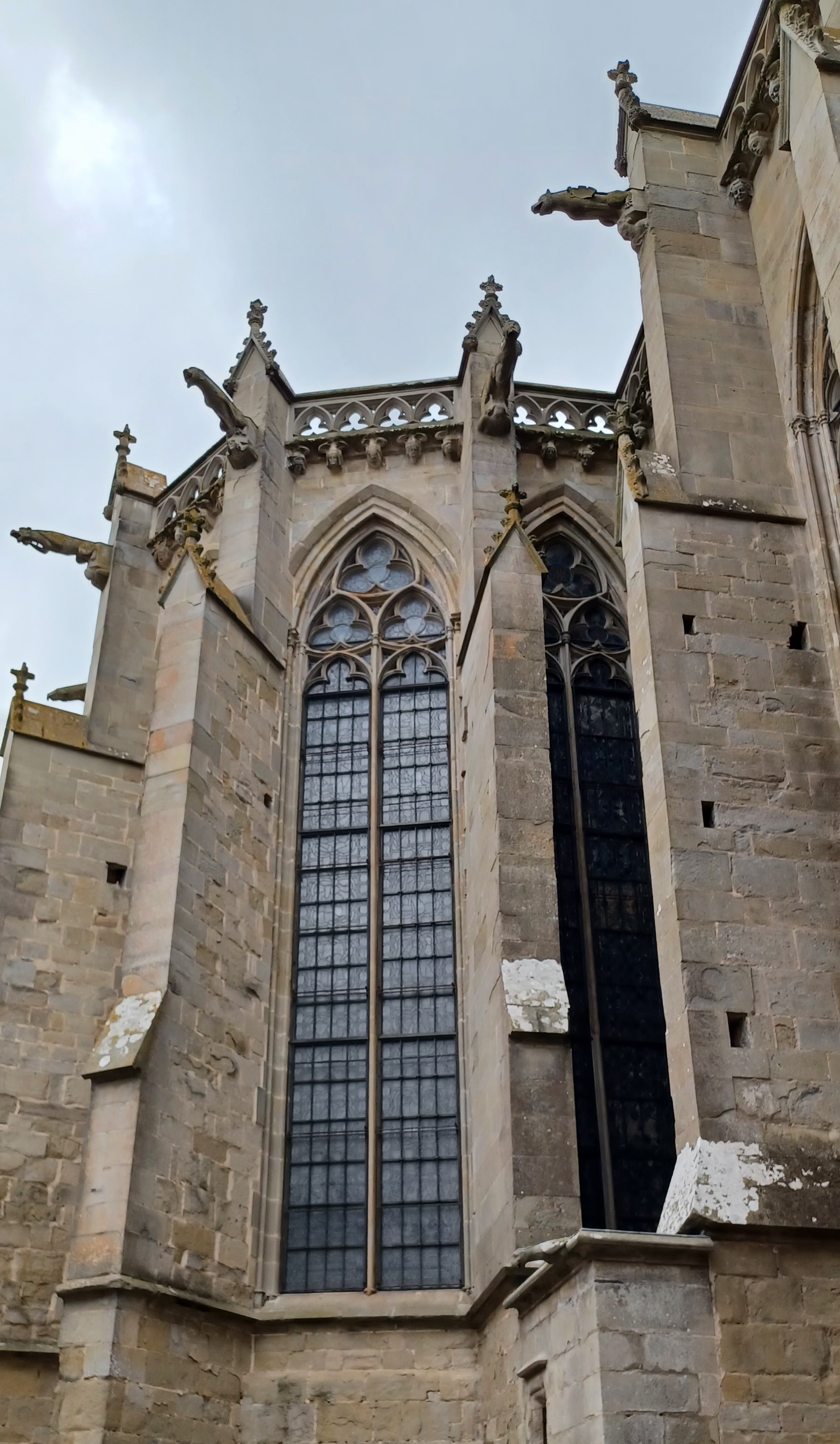
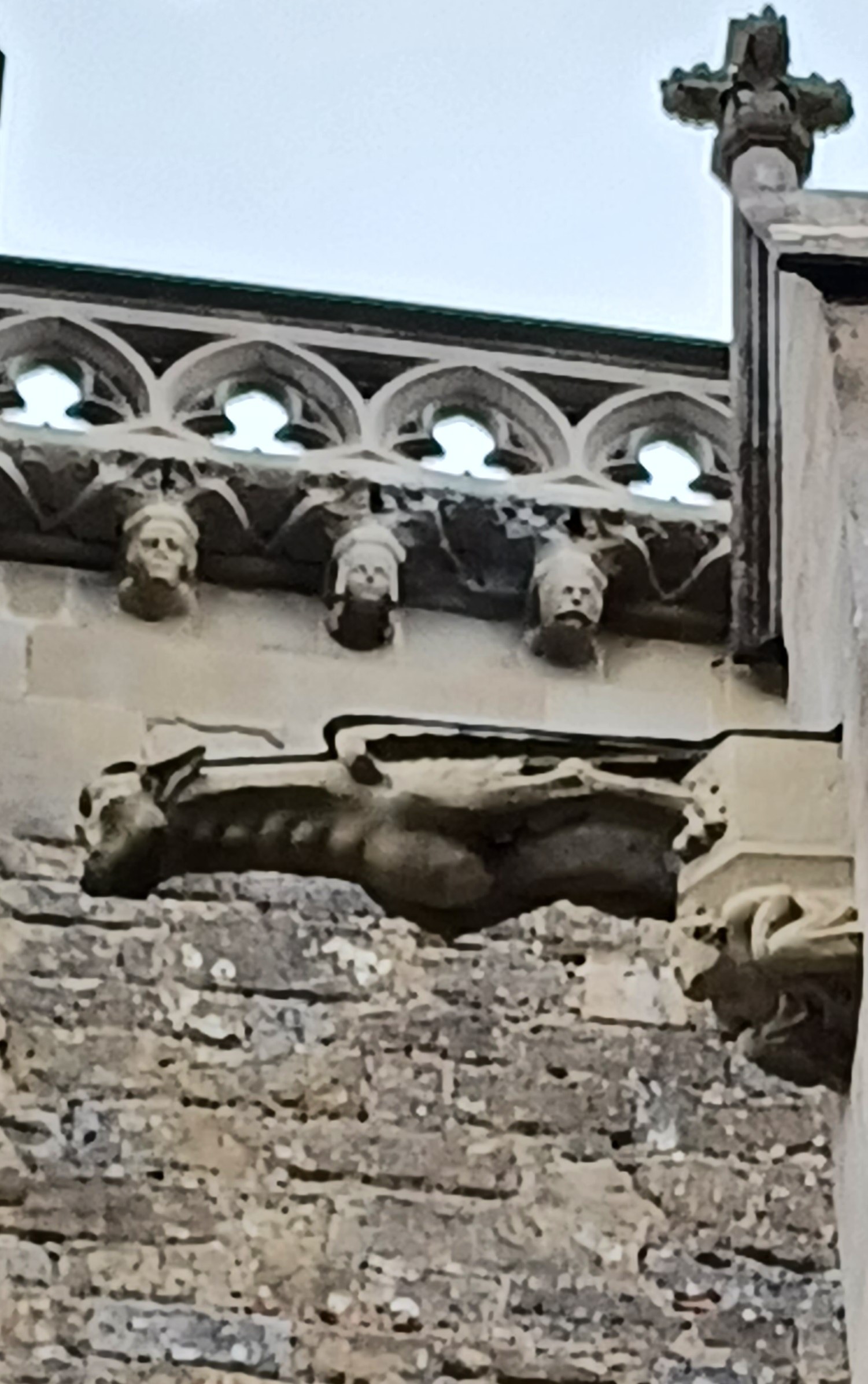

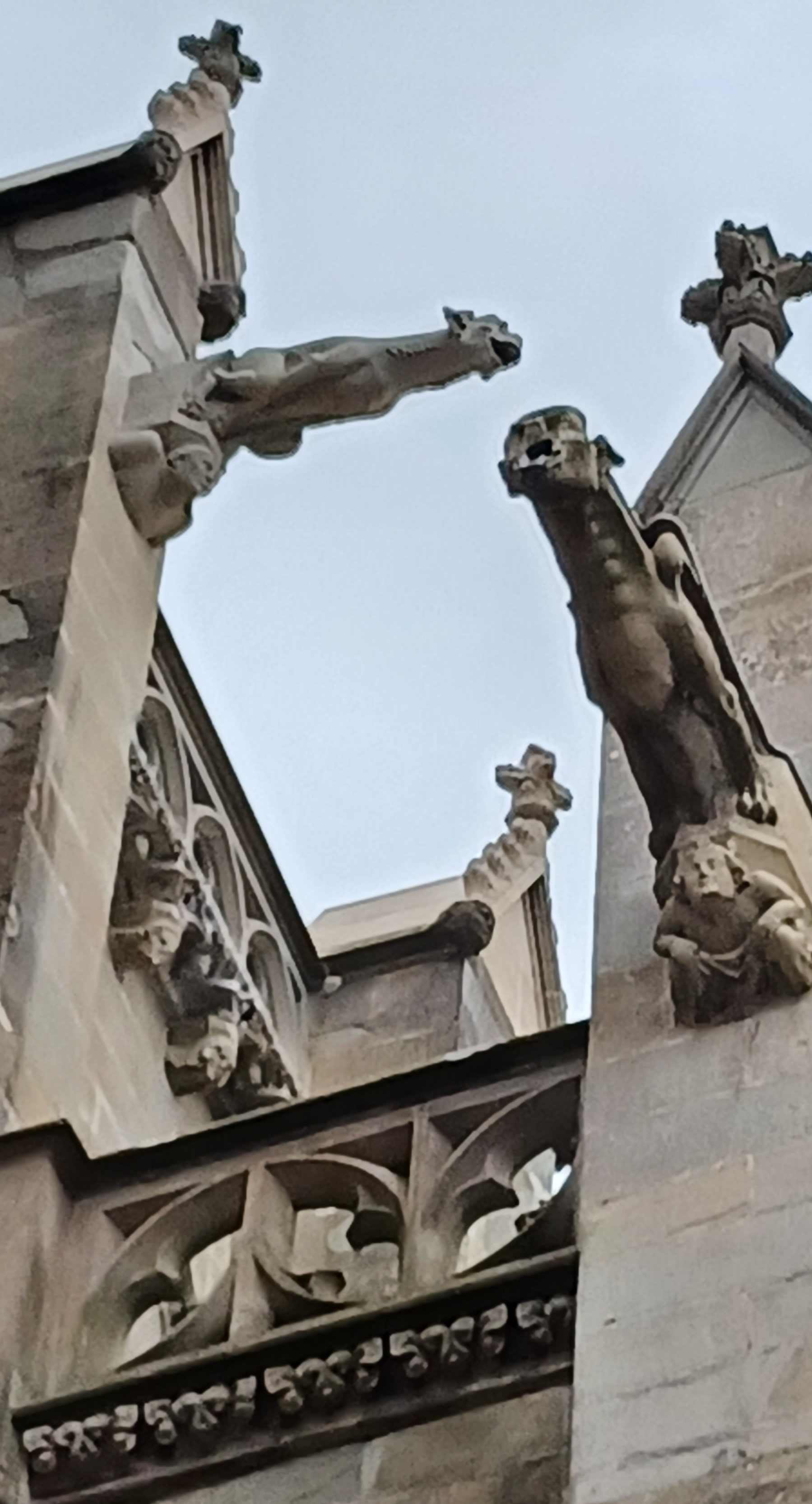
I enter the Romanesque nave, with its door being placed on the side rather than the end. The docent from my tour yesterday recited a story about how Christian churches always face east towards Jerusalem, but a strong wind from the West “brings the Devil into the Church” so the door was either built, or moved, to the side rather than the far end as is traditional for churches and cathedrals.
The chapel vaults are the same height as the main vault, which is also somewhat unusual. There are iron bars joining the columns and reinforcing the structure. The 13th century architects were masters at blending the Romanesque and Gothic styles into this very airy and harmonious structure.
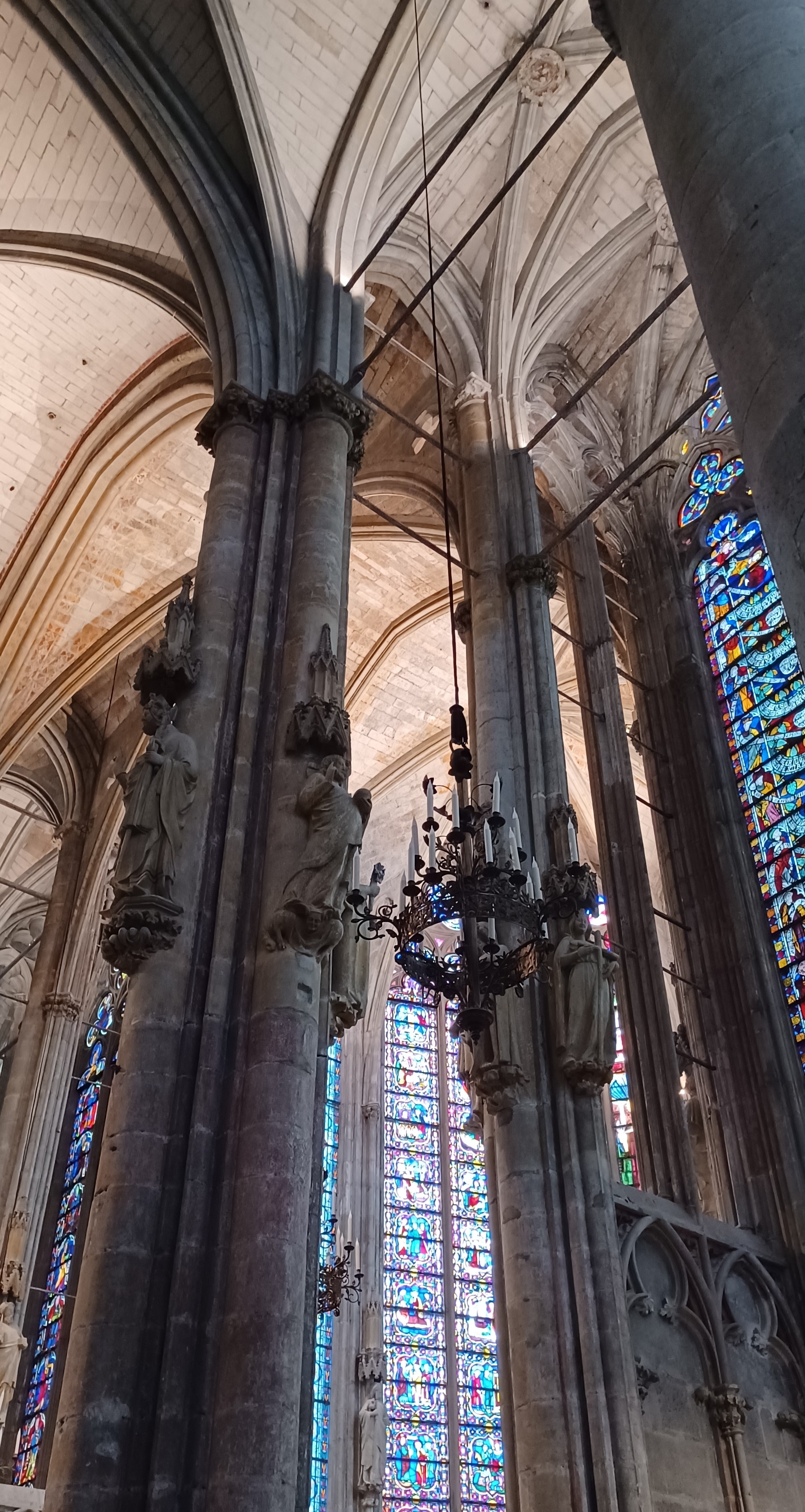


I start photographing the glass. There are two Rose windows dating from the late 14th to early 16th centuries. Seven vertical panels over the choir date to 1280 and are among the oldest (and most beautiful) stained glass windows in southern France.


The North Rose window is made from green, purple and red squares set into twelve double petals, the trefoils are set in purple, yellow and blue, with a central quatrefoil representing Mary surrounded by angels and saints.



The Midi Rose window hosts twelve single petals at the center and twelve double petals at the border, in squares of yellow, red, green and white which give the effect of a mosaic. The center quatrefoil features Christ, the corner quatrefoils are embossed with three gold chess rooks – the heraldic arms of Bishop Pierre de Rochefort (15th century.)

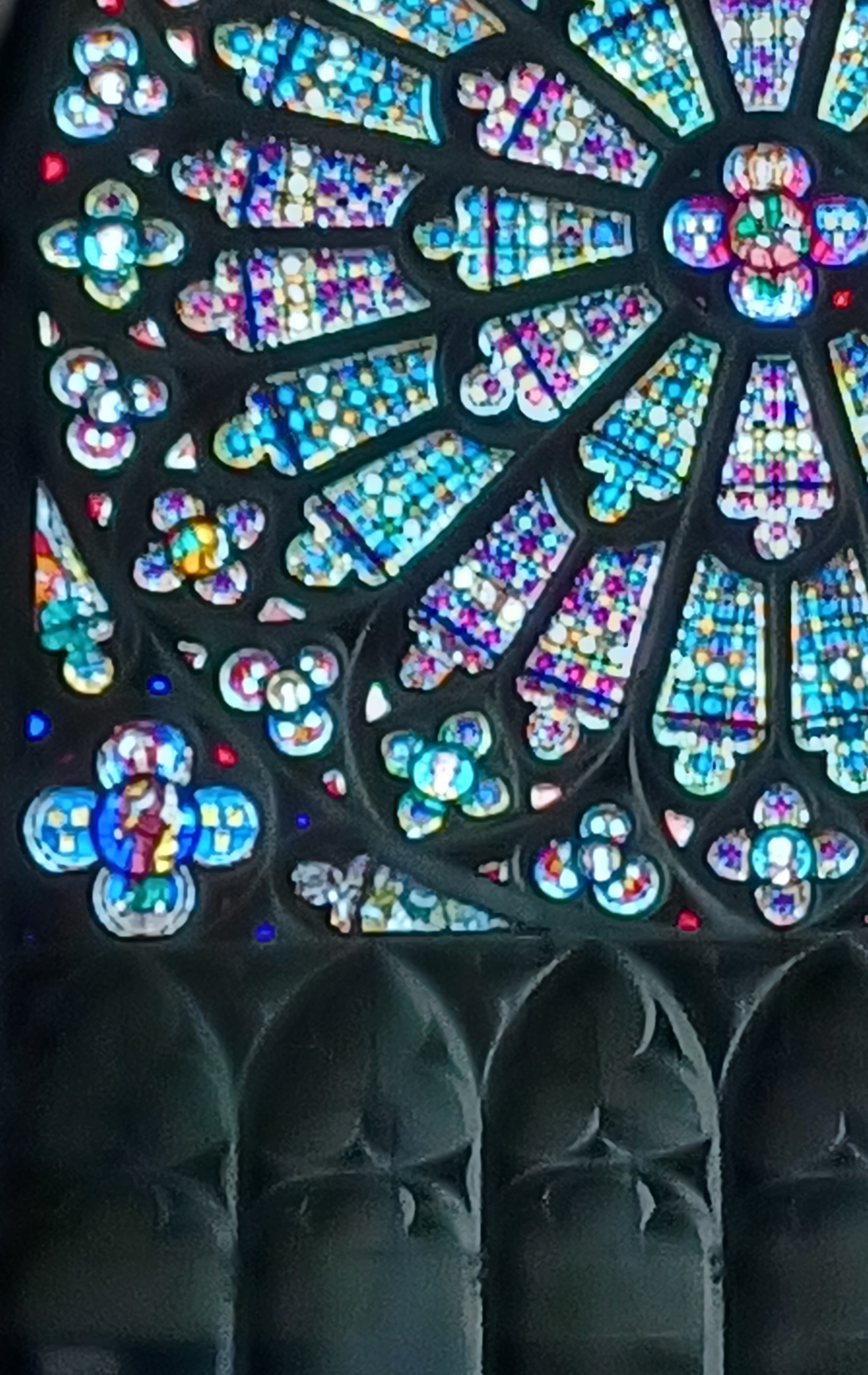
And when I have run out of angles to shoot, I simply sit and stare at All The Glass, before finally wresting myself away from the seat I had taken at the base of one of the pillars, and say adieu to this beautiful basilica.
I’d have been just staring for hours, there is so much to see. I love stained glass.
LikeLike
I stared as long as I was able to. It was by far the prettiest glass I saw on this trip.
LikeLike
Thank you for sharing your Director’s Cut Travel Blog with us; that we might bask in this loveliness vicariously!
LikeLike